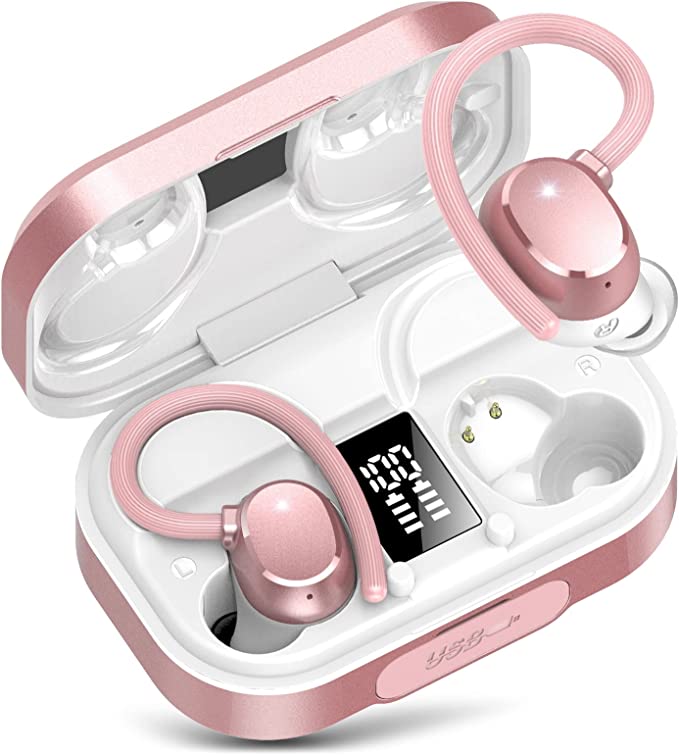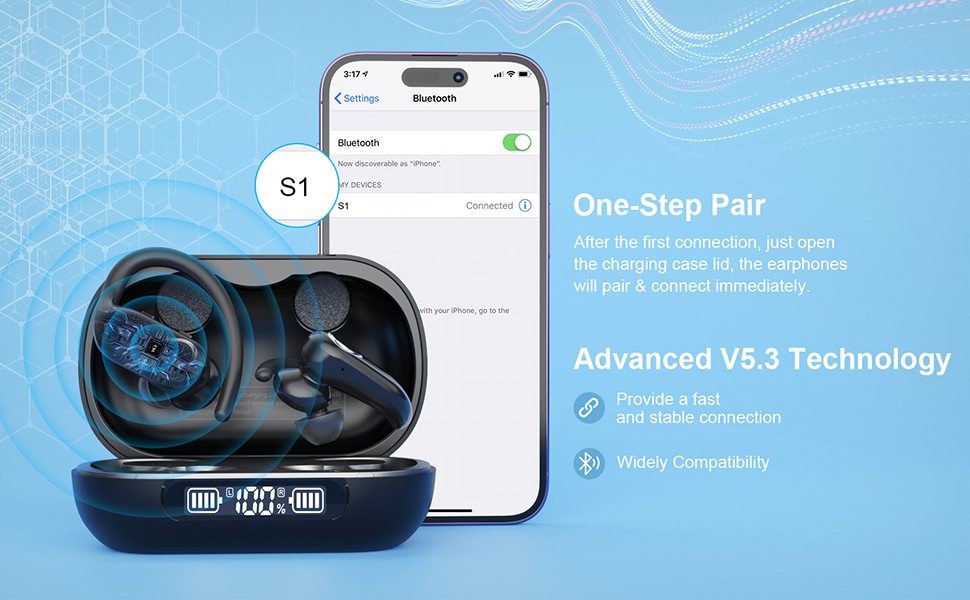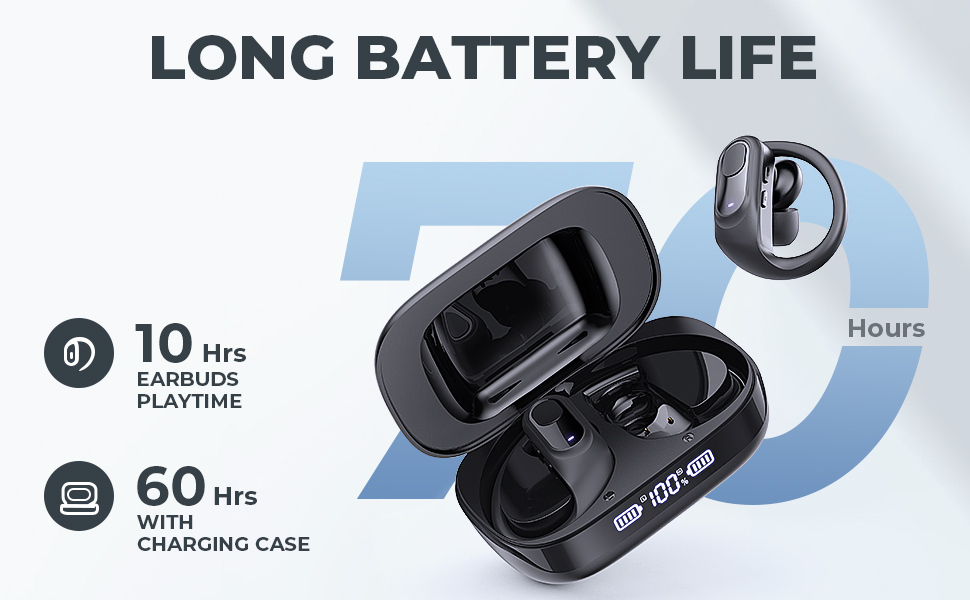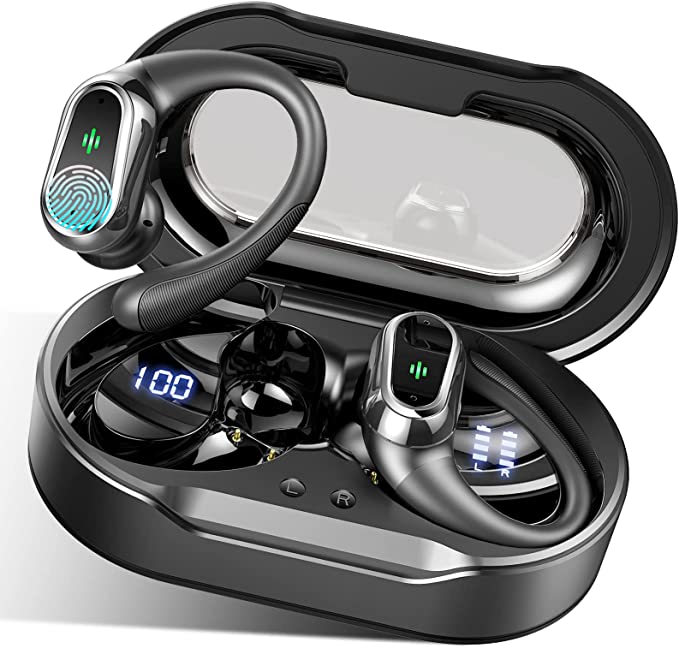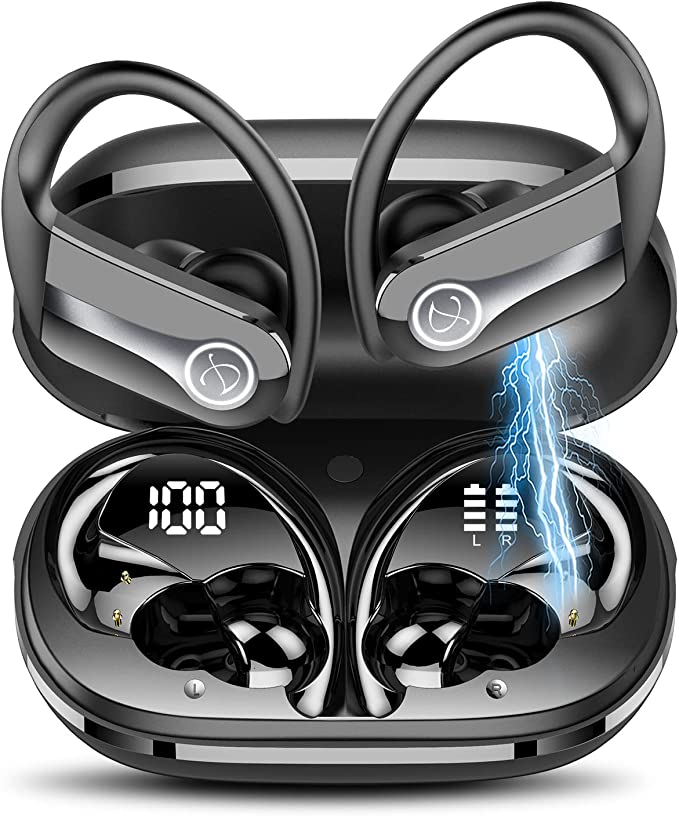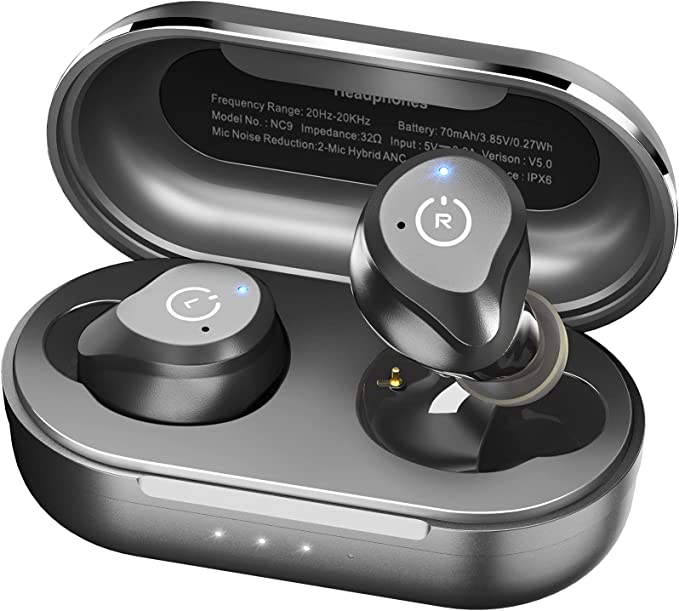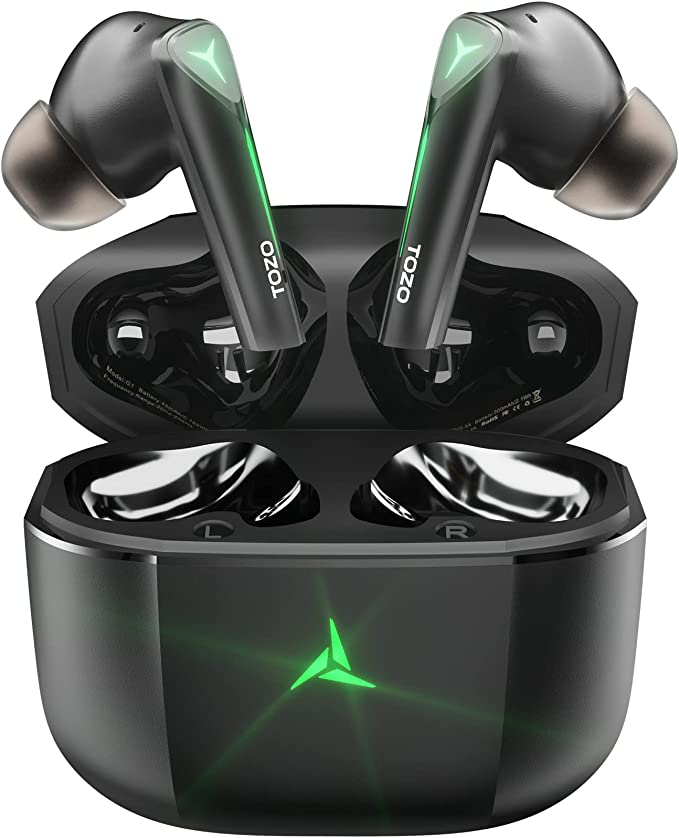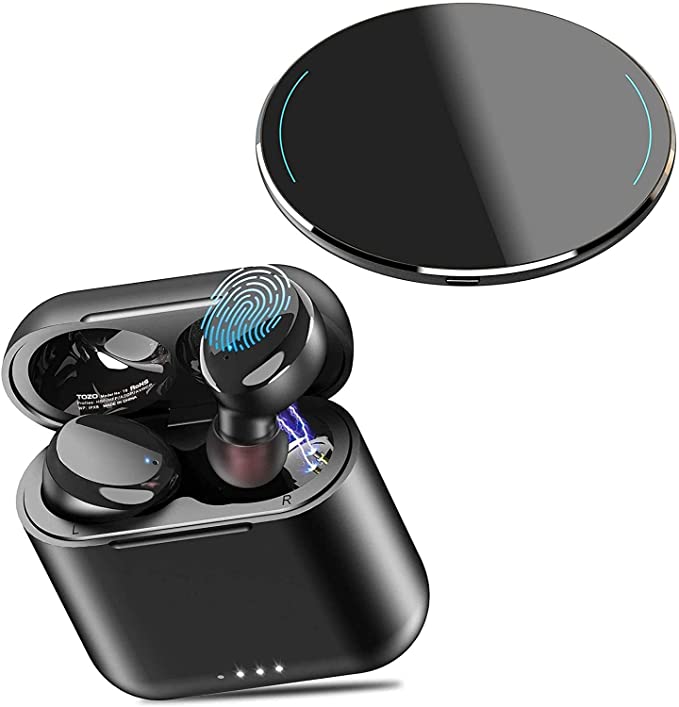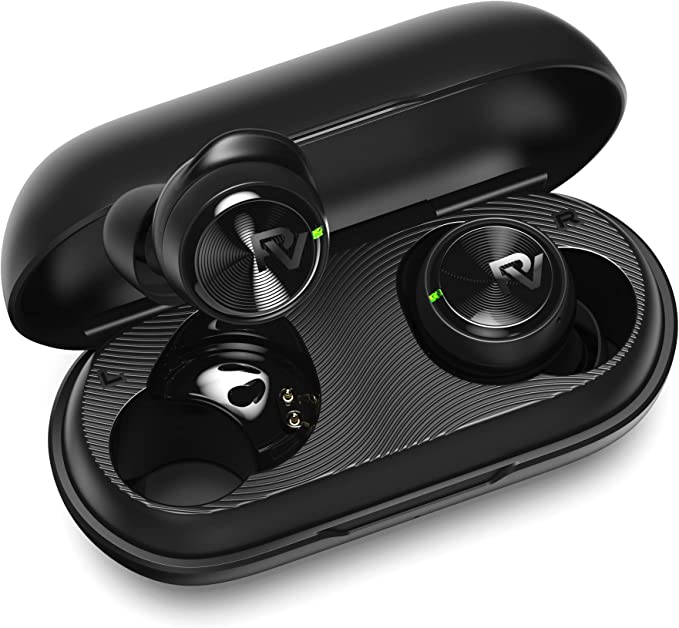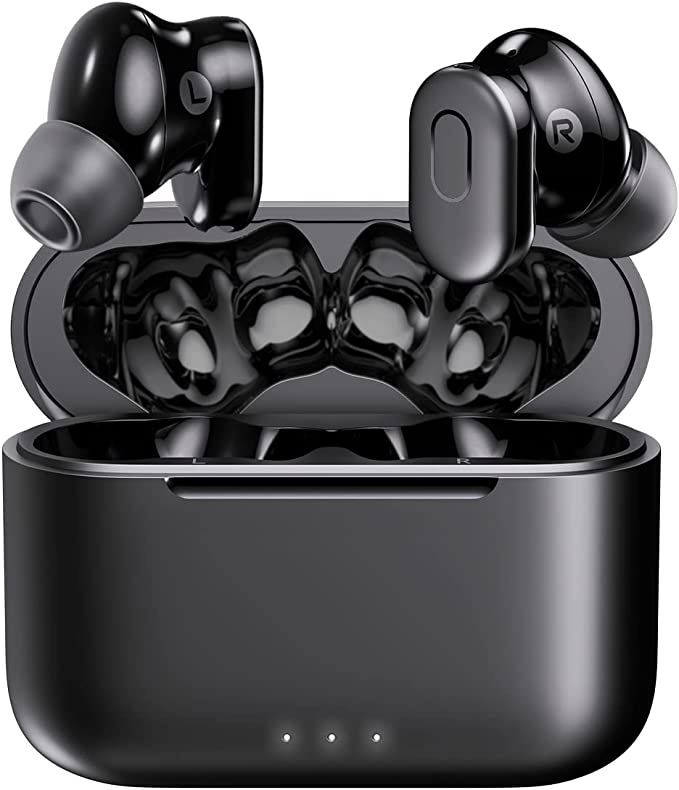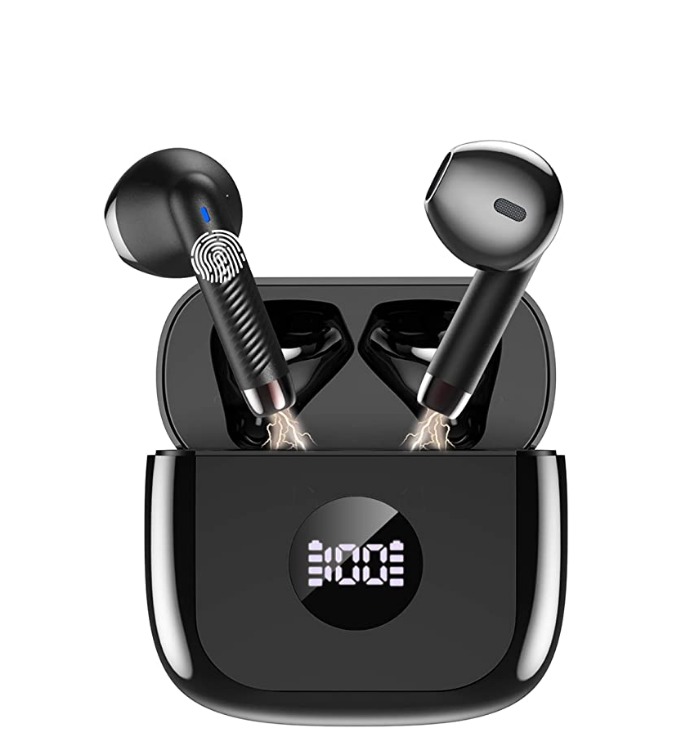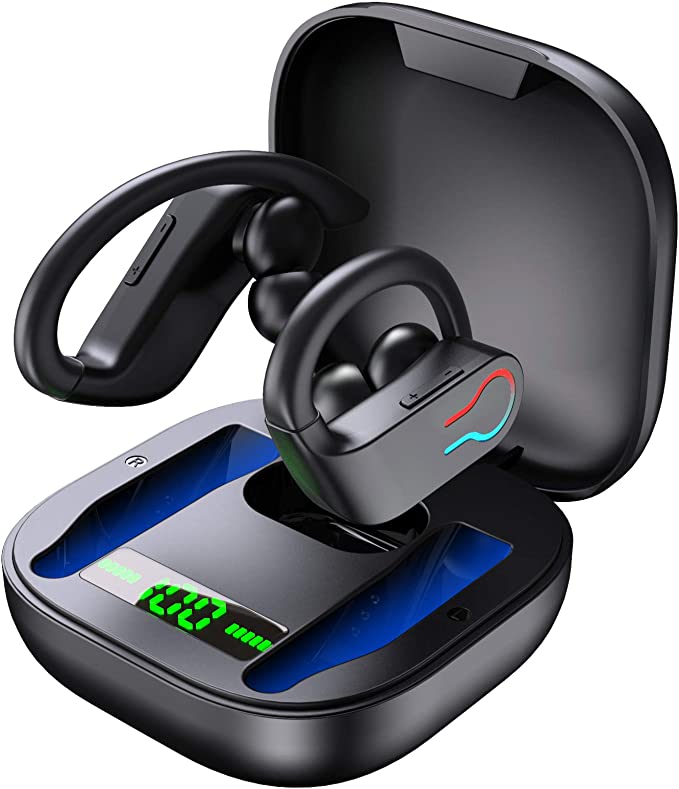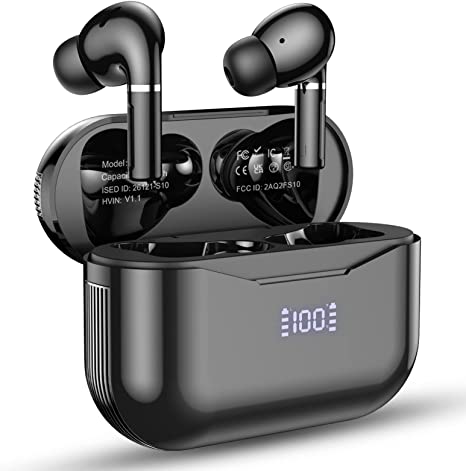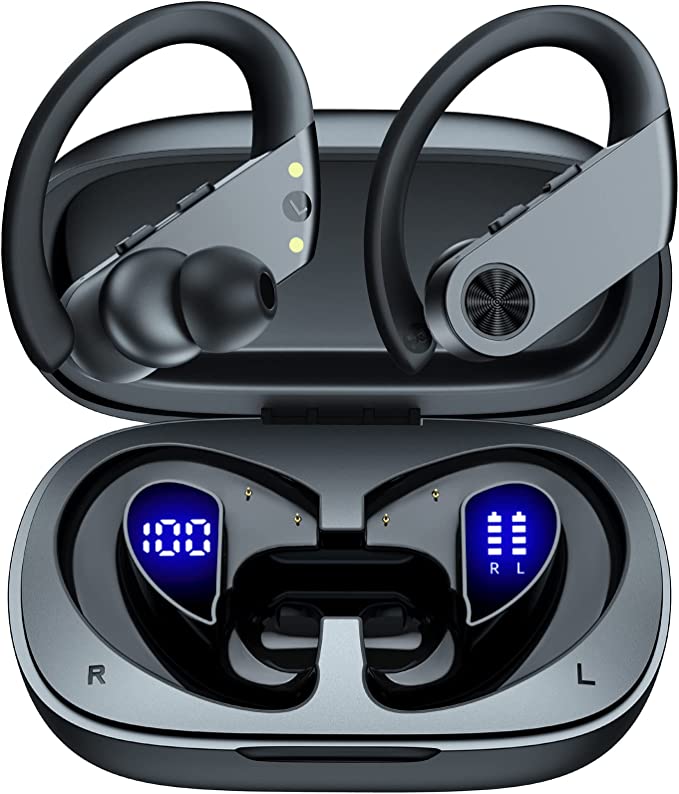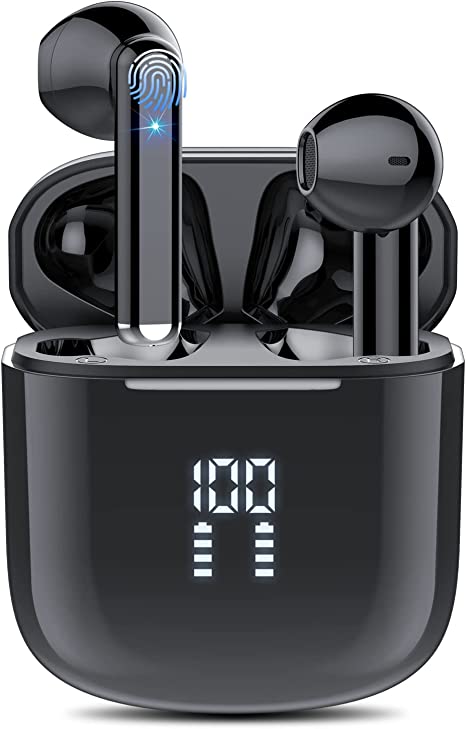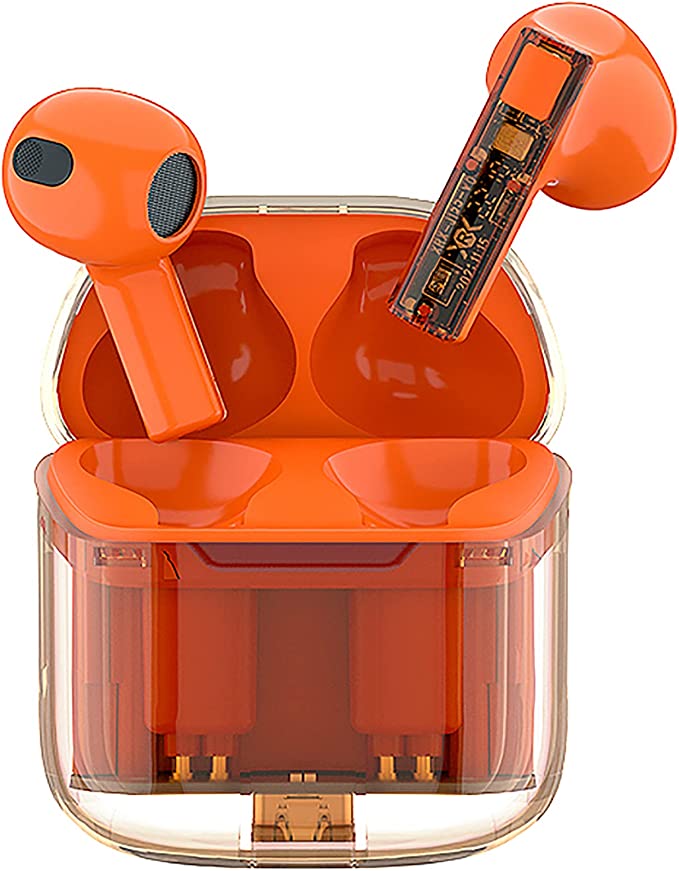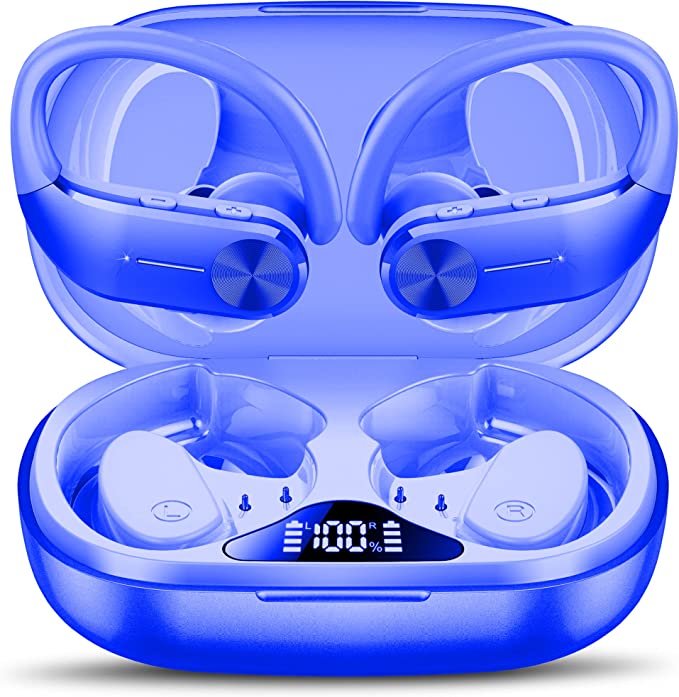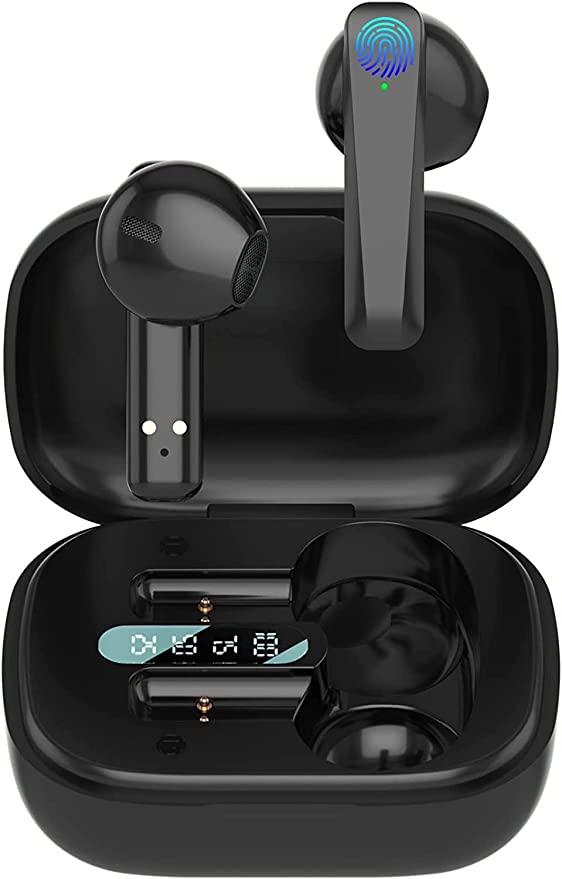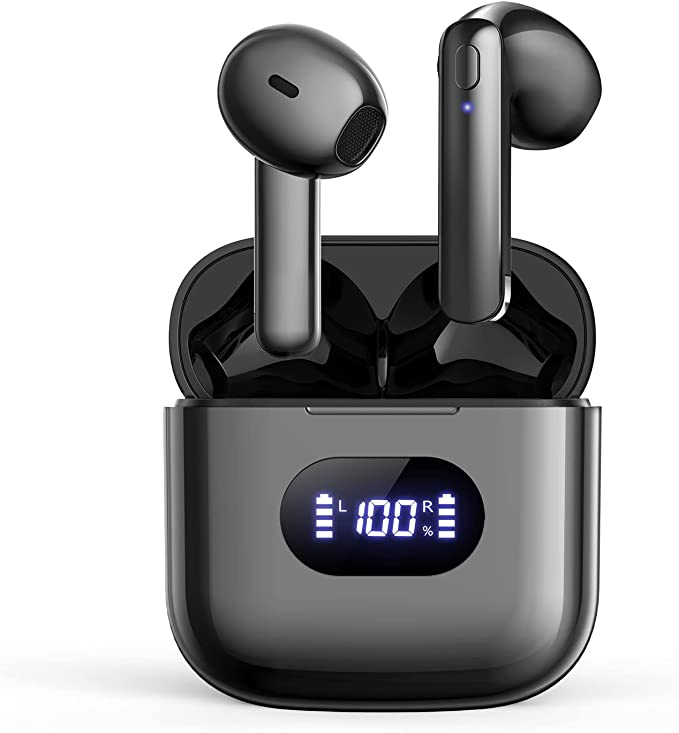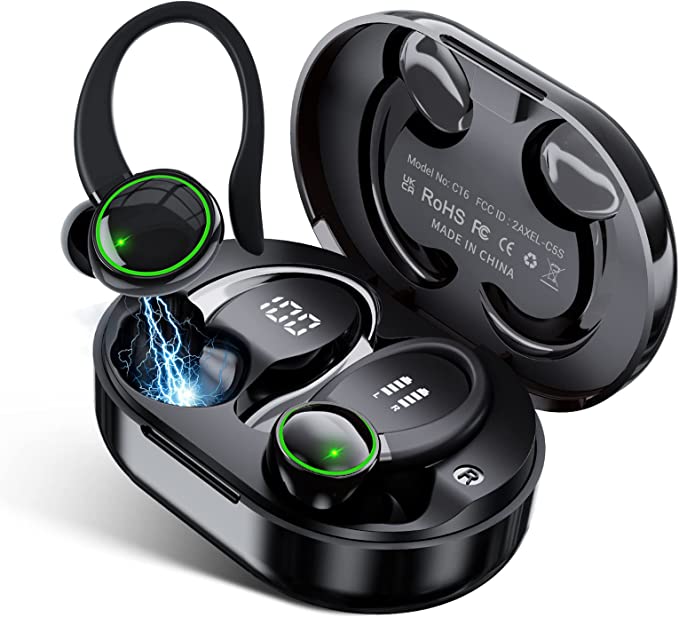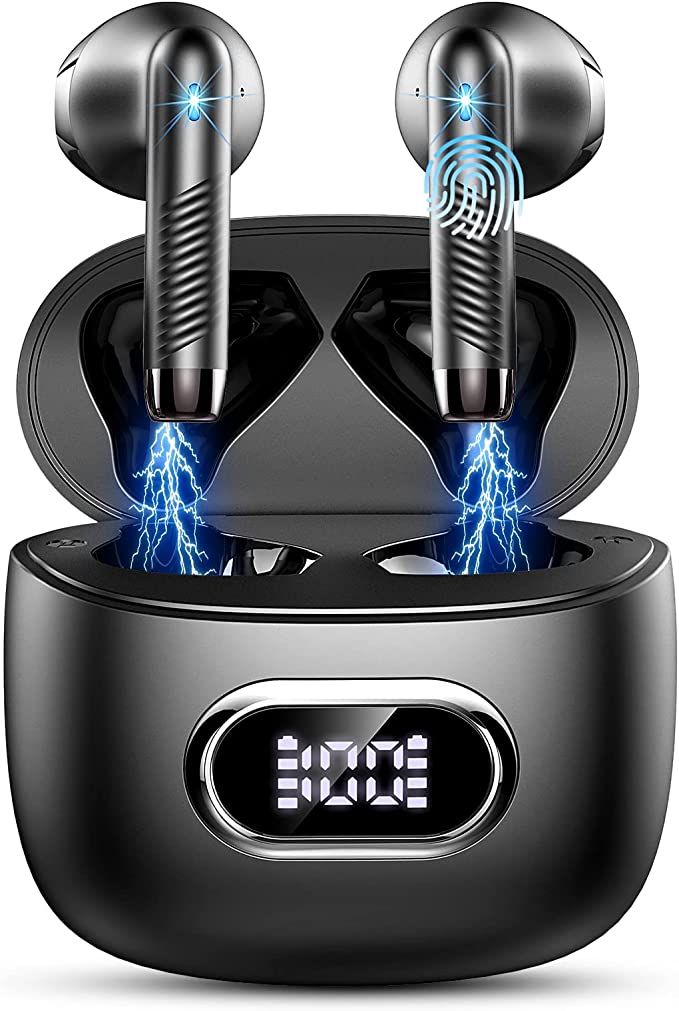TOOBOSS FFGE-011 Wireless Earbuds: Bluetooth 5.3 Low Latency Sports Waterproof HiFi Sound
Update on June 30, 2025, 9:55 a.m.
In the sprawling digital aisles of online marketplaces, we’ve all encountered it: the tantalizingly perfect product. Take the TOOBOSS FFGE-011 Wireless Earbuds. The feature list reads like a dream for the budget-conscious tech enthusiast—the latest Bluetooth 5.3, sports-ready IPX7 waterproofing, and the promise of HiFi stereo sound. The price tag whispers, “This is the one.” But then you see the rating: a lukewarm 3.2 out of 5 stars.
Curiosity turns to confusion as you dig deeper. A remarkable 31% of the 30 global ratings are a perfect five stars, celebrating a rock-solid connection and excellent sound. Yet, an almost equal 27% have cast a one-star vote, citing a litany of frustrations from random disconnections to a lifespan measured in weeks. This isn’t just a mixed review; it’s a statistical battleground.
What lies behind this paradox? Is this product a hidden gem or a carefully disguised piece of e-waste? The story of the TOOBOSS FFGE-011 is more than just a review; it’s a masterclass in the realities of budget technology. To solve this mystery, we need to become detectives, and our first piece of evidence is a simple but powerful concept.

A Detective’s Toolkit: The Triangle of Compromise
Before we dust for fingerprints in the user reviews, let’s establish our analytical framework: The Budget Tech Triangle of Compromise. Imagine a triangle with three vertices: Performance, Price, and Reliability.
- Performance: This is the “on-paper” appeal—the impressive specifications like Bluetooth 5.3, fast charging, or a high-resolution sensor. It’s what marketing materials shout about.
- Price: This is the alluringly low cost that makes you click in the first place.
- Reliability: This is the silent, invisible vertex. It encompasses quality control (QC), component consistency, software stability, and long-term durability. It’s the promise that the product you receive will work as advertised, not just on day one, but on day 100.
Here is the fundamental law of budget electronics: You can have any two, but you can almost never have all three. A product can be cheap and reliable, but it will likely have mediocre performance. It can have great performance and be reliable, but it certainly won’t be cheap. The TOOBOSS FFGE-011, in its quest for an impossibly low Price and a high-spec Performance sheet, has made a profound sacrifice at the altar of Reliability. This triangle will be our guide as we investigate the clues.

The Investigation: Following the Trail of User Complaints
With our toolkit in hand, let’s examine the evidence left by disgruntled users. Each complaint is a clue that points directly to a compromise within our triangle.
Clue #1: The Ghost of Connectivity
User “Damon” provides our first major lead with a detailed account of connection chaos: “I bought these a long time ago and I’ve continued to try and work with them but they are just bad… They will randomly unpair while in use and if I walk by them while charging in the case they will pair, even when I’m already on the phone.”
On the surface, this contradicts the promise of Bluetooth 5.3, a standard designed by the Bluetooth Special Interest Group (SIG) for more stable connections. But the chip is only part of the story. The real culprits lie in the “invisible costs” that budget manufacturers cut to keep the Price down, directly impacting Reliability:
- The Software Brain (Firmware): The firmware is the earbud’s operating system. Poorly written, bug-ridden firmware can cause pairing nightmares, regardless of how advanced the hardware is. Polishing software takes time and skilled engineers—both of which are expensive.
- The Nerve Ending (Antenna Design): In a tiny, 3-gram earbud, designing an effective antenna is a true engineering art. A poorly placed or designed antenna, often a necessity to fit into a sleek, cheap mold, will result in a weak and easily disrupted signal. It’s the equivalent of putting a Formula 1 engine in a car with bicycle tires. The potential is there, but the execution fails.
This isn’t a failure of Bluetooth 5.3; it’s a failure of implementation—a classic sacrifice of Reliability.

Clue #2: The Tyranny of the “Smart” Touch
Damon strikes again with another critical observation: “They are also so small you can’t put them in or take them out of your ears without setting off something.”
Here, we see another compromise in the name of a flashy Performance feature (“Smart Touch Control”). The technology itself, capacitive touch, is simple—it detects the electrical properties of your skin. However, the difference between a premium and a poor implementation lies in the software. High-end earbuds use sophisticated algorithms to differentiate between an intentional tap and an accidental brush from your ear or hand. This involves analyzing the contact area, duration, and even the pattern of the touch. Developing and testing these anti-misfire algorithms is a significant R&D expense. Budget products often skip this, setting the sensitivity to high to appear responsive, resulting in the frustrating experience described. It’s a feature that looks great on a bullet-point list but is a liability in practice.

Clue #3: The Contradictory Soundscape
Our final clue is a fascinating contradiction. User “Antonio” raves, “These are excellent. Really comfortable and sound great… The bass is actually so strong I have to reduce the bass eq on my iPhone.” Meanwhile, “mac” reports that during calls, “people tell me consistently that I sound muffled,” and “Polo Tha Kid” laments “Low volume.”
This is the smoking gun that proves our theory. The muffled voice is a Performance issue rooted in physics: the MEMS (Micro-Electro-Mechanical Systems) microphone is simply too far from the mouth. Expensive earbuds combat this with multi-microphone arrays and advanced noise-canceling algorithms (like Qualcomm’s cVc), which are licensed technologies. These are often the first things to be cut from a budget design.
The wildly different sound quality reports point to a catastrophic failure in Reliability, specifically Quality Control (QC). In a high-volume, low-cost manufacturing process, the tolerances for components like the 9mm driver can be wide. The magnetic strength, the coil winding, the diaphragm tension—tiny variations can lead to significant differences in sound. One pair might come off the line perfectly, sounding like Antonio’s “excellent” pair. The very next might have a slightly weaker magnet or a poorly centered coil, resulting in Polo’s “low volume.”
The Verdict: Anatomy of a Product Lottery
Bringing all the clues together, the picture becomes clear. The TOOBOSS FFGE-011 isn’t a “good” or “bad” product in the traditional sense. It is a high-variance product. It is a ticket in a product lottery.
By relentlessly pursuing a low Price and a feature-packed Performance sheet, the manufacturer has traded away Reliability at every turn. The 31% of five-star reviews aren’t fake; they are the lucky winners of the lottery. They received a unit where the components happened to be at the higher end of the tolerance spectrum and the firmware didn’t have a critical bug. The 27% of one-star reviews are from the unlucky participants who received a “dud.”
This phenomenon is so common in markets with information asymmetry (where the seller knows much more about the product’s quality than the buyer) that it has a name in economics: the “Market for Lemons,” a concept first described by Nobel laureate George Akerlof. When consumers can’t easily distinguish between good-quality and poor-quality goods, the bad can drive out the good. In the world of budget tech, this manifests as a sea of products that look great on the outside but are a gamble on the inside.

Conclusion: Your Guide to Winning the Game
The mystery of the 3.2-star earbuds is solved. But the goal of this investigation was not to condemn a single product, but to arm you, the consumer, with the tools to navigate this treacherous market. You don’t have to be a victim of the product lottery. You can become a savvy budget tech detective. Here’s how:
-
Read the Distribution, Not Just the Score. A low average score is a warning, but a U-shaped or highly polarized distribution (many 5-star and 1-star reviews) is a giant red flag for inconsistent
Reliability. It screams “product lottery.” -
Hunt for Patterns in Negative Reviews. Ignore the generic “it broke” comments. Look for detailed, recurring complaints about specific technical issues—like connectivity, touch controls, or microphone quality. These are the fingerprints of specific design and manufacturing compromises.
-
Apply the Triangle of Compromise. When you see a product with an unbelievable price and an incredible feature list, ask the crucial question: “What did they sacrifice?” Is it the firmware? The quality of the materials? The consistency of the manufacturing? The answer is almost always
Reliability.
Ultimately, when you’re browsing the world of budget electronics, remember that you are not just buying a product; you are often buying a risk profile. The TOOBOSS FFGE-011 offers the chance of a great reward for a low price, but at the risk of complete frustration. The choice is yours, but now you can make it with your eyes wide open, not as a hopeful gambler, but as an informed detective who knows exactly what game is being played.

